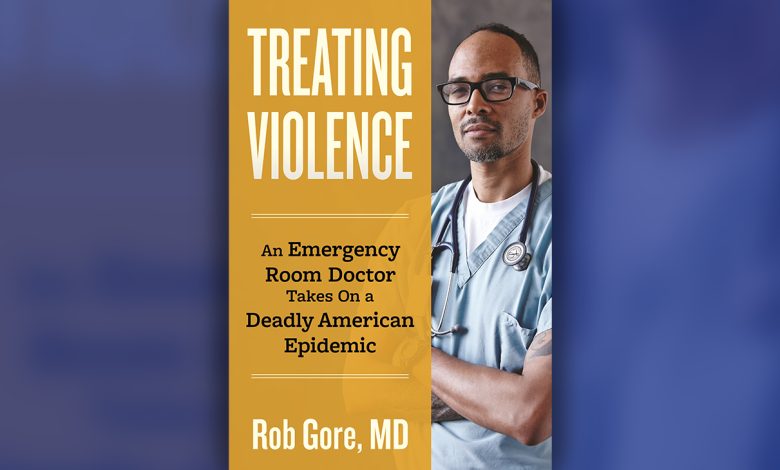Book Review: Treating Violence: An Emergency Room Doctor Takes on a Deadly American Epidemic

By Terri Schlichenmeyer
The Bookwurm Sez
Well, thank you so much to your co-worker.
That’s where you got this ick, this scratchy-throat, achy-body, upset-stomach, can’t-sleep virus. He sneezed and that’s all it took. Now you’ve got what he had and you’re trying not to spread it anymore.
As you know from experience, and as attested in the new book “Treating Violence” by Rob Gore, MD, epidemics affect everybody. In this book, the scourge is violence.
Once upon a time, Gore had a brother. Angel wasn’t biologically related to Gore, but within a short time after Gore’s parents fostered the young boy, they considered each other siblings.
They tussled and played together. Gore watched over his “brother” and when Angel got older, he did the same for Gore. But Angel was anything but an angel and, slowly, he turned to hustling drugs.
Gore says he wishes he’d done more to stop him. Eventually, Angel went to prison.
Growing up in Brooklyn, Gore knew that the streets were not kind to people who looked like him, people with Brown or Black skin, and he understood early how privileged he was.
He was granted – and sometimes squandered – the best education. In high school, after he was given a chance to “shadow” sports medicine practitioners and after he noticed a lack of Black people in medical careers, he saw his own future. Gore attended Morehouse College, with an eye toward helping Black and Brown people in crisis.
According to the Centers of Disease Control and Prevention (CDC), Gore says, “homicide… is the number-two cause of death for Black males ages one to nine…” but there are ways to identify issues before they become dangerous, out-of-control problems.
The process moves through examination of a person’s childhood traumas and what happened to them as adults, followed by listening, validating, and asking for calm.
Gore understood this as a young doctor, and he decided to do something about it.
“Lack of funding was a roadblock” for it, he says, “but the seed was planted, and my conviction continued to grow.”
You’re tired of attending funerals, and tired of reading about another dead child somewhere. You’re ready to act. You’re ready to read “Treating Violence.”
Indeed, this book might light a fire under you.
Gore first explains what street violence does to Black communities and families, which is shocking and upsetting.
This begins his biography, which is a brief (too-brief!) set-up for how and why Gore ultimately founded Kings Against Violence Initiative (KAVI), an organization that uses trained volunteers to lower the anger level and any desires for revenge when someone is the victim of violence.
The story is a rousing one, but readers may feel a bit cheated by the rushed transition from Gore’s life and his work as an ER doctor, to KAVI. Information on KAVI and similar organizations may spur you to take action.
With the Surgeon General’s recent warning on gun use in mind, “Treating Violence” couldn’t be more timely or necessary. Find it, read it for the excellent biography and the ideas, statistics, and urgency – and get to work.




